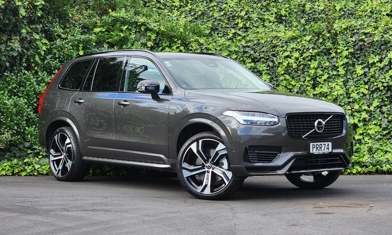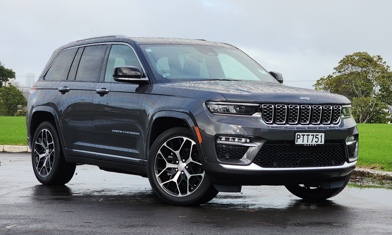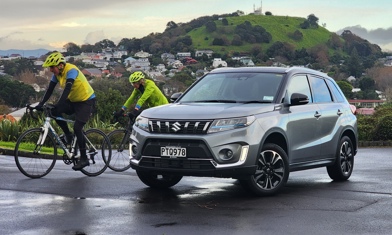Three years is a lifetime for almost anything, but in the car world, it’s a life cycle. But with the 2024 Mitsubishi Eclipse Cross PHEV, it’s actually a good thing.
Ahead of its time, we last tested the Eclipse Cross PHEV back in 2021, when rebates for PHEVs were $5750, and the XLS model could be had for as little as $44,240. Both the Eclipse Cross and Outlander were – and still are - synonymous with plug-in hybrids, setting the standard for affordable PHEV SUVs.

Ahead of its time, it was a modern, fresh small/medium SUV that offered 55km+ of EV range and both AC and DC charging. And in 2024, it still is, with a host of functional updates in 2023 that gave it a handful of updates under the skin.
And that’s why we’re in the XLS entry level model, to get a reminder of how the Mitsubishi PHEV fares in the 2024 rebate-free world.

The price, for a start: starting at $52,990 for this XLS, the range is now simplified to three, 4WD-only models, with a Sport $55,990, and $59,990 VRX.
All models now get rear USB and USB-C charging ports and projector Ellipse LED front headlamps. The XLS now scores adaptive cruise control and rear parking sensors, lacking in the previous model.

With such a tightly stacked range, it’s probably easier to point out what the entry level XLS doesn’t get, over its range siblings: the XLS misses out on a three-pin power outlet in the rear, and an electric tailgate. While there are other things like a head-up display, front parking sensors, and the around view monitor, beyond that it’s largely things like trim and colour that differentiates the XLS from the others. And that’s a good thing.
Because mechanically, the XLS is strong, with the same 2.4-litre petrol four-cylinder as before, producing a decent 94kW and 199Nm. But it’s the two electric motors and the 13kWh battery that brings the magic, giving up to 55km of EV range. It adds 60kW/137Nm to the front and 70kW/195Nm to the rear, operates in parallel or series, so basically, it’s either with or alongside the engine to make or store power, for both performance or economy, culminating in pure, silent EV mode.

Claimed economy remains the same 2.1l/100km (WLTP), though like many PHEVs, this heavily depends on its daily use and charge cycle.
The practical use is largely very simple, if you want it to be. Leave the Eclipse Cross to do its thing in full auto mode, and it slips in and out of electric and hybrid modes when it thinks it’s best to do so, and as long as you keep it plugged in when the battery is drained, it does a simply remarkable job at this. It’s very possible to see more than 1000km per 45-litre tank, provided it’s recharged frequently.

And this is the major appeal of a PHEV, as it requires a little driver involvement, at the very least, to plug it in. Unlike many PHEVs, the Mitsubishis offer both AC and DC charging, to make the most of any power situation, whether at home or in the public arena. There is a default fast charging cut-off at 80% which is mildly annoying, designed to keep the battery cool (along with its cooling fan), as it requires it to be replugged/reset to get to 90%, then 100%. But about 30 mins is a quick way to add another 50km.

Around 7 hours on an AC three-pin wall socket, around 4 hours on an AC Wallbox, or as quick as 25 minutes on a DC public fast charger to get to 80%, DC charging speed is limited to 22kW, but it’s very handy to have, despite it being via a CHAdeMO style charging plug, which are slowly being phased out for Type 2.

With five levels of adjustable regeneration via the steering wheel paddles, and the switch that either saves the existing state of charge or very effectively recharges the battery, there is some driver management to maximise every volt, which feels very involving, even if it’s actually not required.

The biggest driver input is turning off the AC system, which adds another 10% to range when full, and we saw as much as 63km offered, from 53km with AC on (Mitsubishi claims 55km).

The smartphone app is also matched to the Eclipse Cross PHEV (though lacking on Outlander PHEV), which provides timed charging and climate pre-conditioning, so the car is pre-heated and ready to drive while charging, avoiding further drain on the EV battery.

Is the Mitsubishi Eclipse Cross PHEV fast? Not really. We last tested it at 9.4 seconds, and this time around, we saw 9.0 with a fully charged battery, but like any EV-assisted engine, it feels more responsive at lower speeds than its 0-100 times suggest.

It still tows 1500kg, the six-stage CVT still does a good job of emulating a normal auto, and its size and price is the perfect SUV alternative to its bigger Outlander PHEV sibling.

While the tech and screens might look and feel a little dated, this isn’t a terrible thing, as the tech also predates the latest warning this, alert that, chime me annoying systems that are infecting some of the latest cars.

As the most popular PHEV sold in 2023, the Eclipse Cross sold 2777 under the rebate regime. Now second PHEV to only the Outlander (by a handful), its sales of 150 at 2024 half-year show it’s still a very strong and popular SUV. With the PHEV representing 20% of Eclipse Cross sales and the model ranked as the 9th best-selling passenger vehicle in NZ, the Mitsubishi Eclipse remains an impressive and economical Cross to bear.
MITSUBISHI ECLIPSE CROSS XLS PHEV
ENGINE: 2.4-litre petrol four, twin electric motors, 13kWh plug-in battery
GEARBOX: Six-stage CVT automatic, AWD
POWER: 94kW/199Nm (60kW/137Nm front motor, 70kW/195Nm rear motor)
0-100KM/H: 9.0 seconds (tested)
ECONOMY: 2.1l/100km, 55km EV range
TOWING: 1500kg
PRICE: $52,990





















